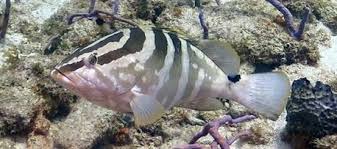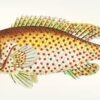Dragons in Chinese Cosmology: The Symbol of Creation in the Chinese Cultural Tradition

In the rich tapestry of Chinese mythology and cosmology, dragons have played a central role in shaping the universe. From the creation of the world to the dynamics of nature and life, dragons are often regarded as powerful symbols of transformation, creation, and cosmic balance. Their mythical significance stretches across centuries, transcending dynasties and becoming an essential part of Chinese cultural identity. This article will explore the symbolism of dragons in the creation myths of Chinese cosmology, their role in the understanding of the universe, and how their representations reflect broader philosophical and spiritual beliefs.
1. The Dragon as a Symbol of Cosmic Power
In Chinese culture, the dragon is more than just a mythical creature. It represents a potent force, often associated with cosmic power, and embodies the principles of harmony and balance within the universe. The dragon is a symbol of the dynamic and eternal flow of life, connecting the heavens, earth, and water—elements that form the basis of the Chinese view of creation. This connection of heaven and earth through the dragon highlights its central role in the cycle of life, birth, and transformation.
Dragons are often depicted as controlling the waters, representing their authority over rivers, seas, and storms. In Chinese cosmology, water is a critical element in the process of creation and life. It is said that the dragon’s movements over the waters helped to shape the landscape, forming rivers, lakes, and even mountains. By regulating the flow of water, the dragon is believed to play a direct role in the creation and maintenance of life, making it an essential force in the natural world.
2. The Dragon in Chinese Creation Myths: The Beginning of Time
In the beginning of time, according to Chinese creation myths, the world was an endless expanse of chaos. This was the primordial void, a state of undifferentiated existence, before the universe was brought into order. One of the most prominent creation myths in Chinese cosmology involves the cosmic dragon in the story of Pangu, the first living being in the universe.
Pangu and the Dragon of Creation
Pangu, often depicted as a giant, is said to have emerged from the cosmic egg. This egg contained the universe in its unformed state, with the yin and yang elements in perfect balance. Pangu, upon waking, used a giant axe to crack open the egg, creating the world. The forces of yin and yang, which were present within the egg, were released, and Pangu’s task was to separate them to establish the heavens and the earth.
While Pangu is often seen as the first creator in Chinese myth, the dragon plays a crucial role in the unfolding of this creation. According to some versions of the myth, after Pangu’s separation of heaven and earth, a great cosmic dragon emerged from the chaos. The dragon’s vast and powerful form helped to stabilize the cosmos, ensuring that the heavens and the earth remained separate and in balance. The dragon symbolized the hidden energies that governed the universe and helped to maintain order in this newly formed world.
The dragon’s association with Pangu’s creation myth reflects its role as a divine force responsible for maintaining the balance of life and ensuring the continued growth of the world. The dragon’s appearance in this myth reinforces the idea that the dragon is an ancient and powerful entity, vital for the birth and perpetuation of the universe.
3. The Role of the Dragon in the Five Elements
In Chinese philosophy, the Five Elements—wood, fire, earth, metal, and water—are central to the understanding of the cosmos. These elements are believed to be the building blocks of the universe, and their interaction is thought to influence all aspects of life. The dragon, as a symbol of cosmic energy, is closely associated with water, one of the Five Elements, and plays a significant role in balancing the elements and sustaining the cycle of creation.
The dragon’s dominion over water links it to the fluid, ever-changing nature of life itself. Water in Chinese cosmology is not only a literal element but also a symbol of adaptability, potential, and transformation. Just as water can flow and change form, the dragon embodies these qualities of flexibility and movement. In the context of creation, water is thought to be the element that nurtures and brings life to all other forms of existence. Therefore, the dragon’s control over water signifies its role in fostering the continuous flow of life and maintaining the balance between the Five Elements.
The dragon’s association with the other elements further emphasizes its role in maintaining harmony within the universe. While it is most commonly linked to water, the dragon is often depicted as being able to manipulate all of the Five Elements. This ability to control all elements reflects the dragon’s cosmic power and its role as a mediator between the forces of creation, shaping the natural world and sustaining life.
4. Dragons as Protectors of Cosmic Order
Beyond the role of creation, the dragon also plays a key role in preserving cosmic order. In Chinese cosmology, the universe is seen as an interconnected system, where the heavens, earth, and humans coexist in a delicate balance. The dragon is seen as a protector of this balance, ensuring that the cycles of nature are uninterrupted and that harmony is maintained between all aspects of existence.
The dragon is often depicted as a guardian of the celestial realms, watching over the natural order and protecting the world from chaos. This protective role is closely linked to the dragon’s association with the emperor and its role as a symbol of imperial power. In ancient China, the emperor was believed to rule with the mandate of heaven, and the dragon symbolized the divine right to rule and protect the kingdom.
In some myths, dragons are sent to combat forces of disorder or evil that threaten the harmony of the world. These evil forces might take the form of malevolent spirits, monsters, or other cosmic entities that seek to disrupt the natural balance. The dragon, with its immense power, serves as the defender of order, confronting these chaotic forces to restore balance to the universe.
5. The Dragon and the Daoist Philosophy of Creation
Daoism, one of China’s most influential philosophical and spiritual traditions, also incorporates the symbolism of the dragon in its view of the universe’s creation. Daoism emphasizes the interconnectedness of all things and the flow of energy, or Qi, that sustains life. The dragon, in Daoist philosophy, is often viewed as a symbol of Qi, the vital energy that flows through all living things and the universe itself.
In Daoist cosmology, the dragon represents the dynamic force of life that both creates and sustains the universe. It is through the flow of Qi that the dragon is able to influence the balance of the cosmos, ensuring that all elements are in harmony. The dragon’s role in creation is not just a one-time event but an ongoing process of transformation and renewal. Just as the dragon is constantly moving, adapting, and shifting, so too is the universe in a perpetual state of change and balance.
The dragon’s association with Daoism emphasizes the idea that creation is not a singular event but a continuous process. The universe is constantly evolving, and the dragon, as a symbol of Qi, is the driving force behind this ongoing transformation.
6. The Dragon in Chinese Art and Architecture: A Symbol of Creation
The symbolic role of the dragon extends beyond mythology into the realm of Chinese art and architecture. The dragon can be found in numerous representations in temples, palaces, and imperial structures, often serving as a symbol of creation, power, and protection.
In traditional Chinese architecture, dragons are often depicted in intricate carvings on temple walls, gates, and rooftops. These depictions are not just decorative; they serve as symbols of the divine presence and cosmic forces that govern the universe. The presence of dragons in architectural designs is a way to invoke the dragon’s protective power, ensuring that the building remains in harmony with the cosmic forces and is shielded from harm.
In art, the dragon is often portrayed in dynamic poses, illustrating its power and influence over the natural world. The fluid, serpentine form of the dragon is meant to convey movement and the flow of energy, emphasizing its role in the ongoing process of creation. Whether in paintings, sculptures, or ceremonial objects, the dragon’s portrayal is always tied to its association with cosmic forces and its role in shaping and maintaining the universe.
7. Conclusion: The Eternal Role of the Dragon in Chinese Cosmology
The dragon is an enduring symbol in Chinese culture, representing the vast, complex, and interconnected nature of the universe. From its role in creation myths to its ongoing influence in Chinese art, philosophy, and religion, the dragon remains a symbol of cosmic power, balance, and transformation. In Chinese cosmology, the dragon is not just a mythological creature but a reflection of the forces that govern existence and sustain life. As a symbol of creation, the dragon continues to inspire awe and reverence, reminding us of the interconnectedness of all things and the eternal flow of life. Whether as a protector, a symbol of divine power, or a force of cosmic change, the dragon remains a powerful and timeless symbol in Chinese culture, embodying the very essence of creation itself.


